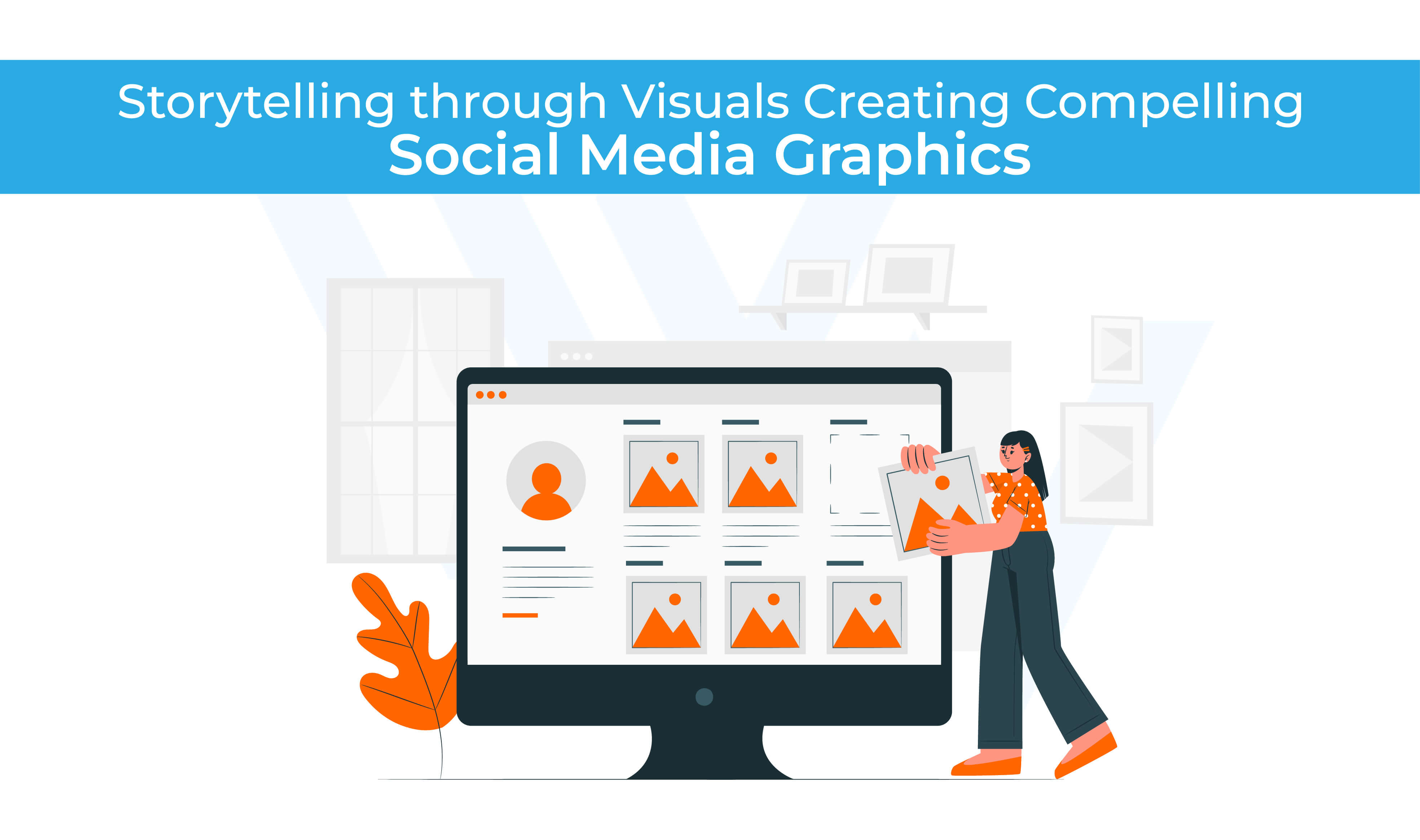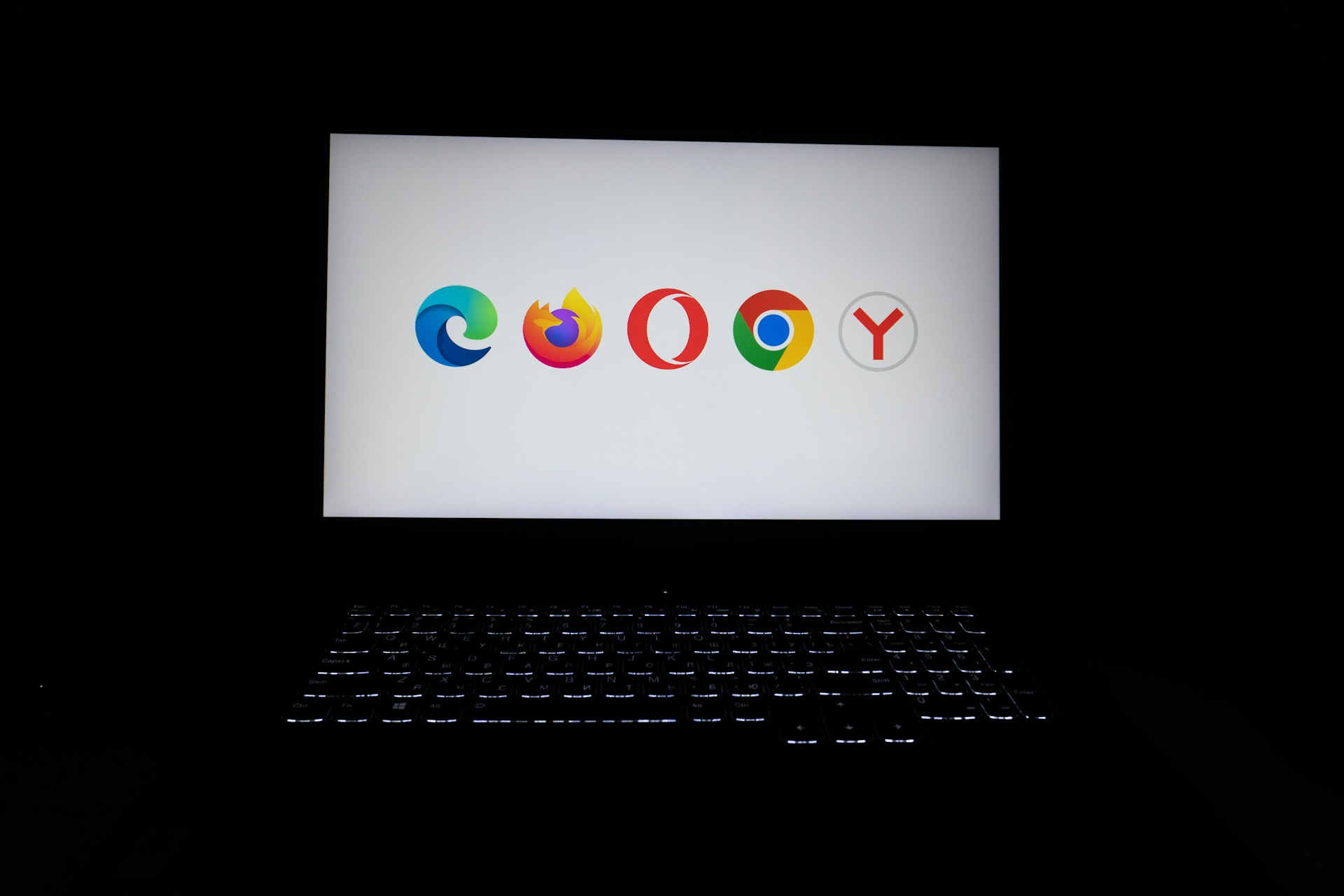
Storytelling through Visuals: Creating Compelling Social Media Graphics
The power of visuals in social media
Visuals hold remarkable influence in social media. From captivating images to compelling videos, they have the unique ability to convey messages, emotions, and stories instantly. In a fast-paced digital world, the power of visuals is unmatched, making them a vital tool for engagement and impact in the realm of social media.
The role of storytelling in digital marketing
Storytelling is the heartbeat of digital marketing, infusing brands with life, meaning, and connection. It transforms sterile marketing messages into captivating narratives that resonate with audiences.
This strategic approach doesn't merely sell products or services; it immerses consumers in an experience, creating loyalty and trust. In this blog post, we'll explore how storytelling weaves its magic in the world of digital marketing, revealing its profound impact and the techniques to harness its potential. Here's how storytelling becomes the driving force behind effective digital marketing:
- Creating Connections: Stories establish a personal connection with the audience, fostering empathy and relatability.
- Making Messages Memorable: Narrative structure makes content more memorable and easier to recall.
- Building Trust: Stories build trust and credibility, as they provide an authentic, human touch to the brand's message.
- Conveying Values: Through stories, brands can convey their values and missions, helping customers align with their ideals.
- Differentiation: In a saturated digital marketplace, storytelling sets a brand apart, making it unique and memorable.
- Fostering Engagement: Engaging narratives encourage likes, shares, comments, and interactions, amplifying the reach of content.
- Solving Problems: Stories can demonstrate how a product or service solves real-world problems, addressing customers' needs.
- Creating a Journey: The hero's journey, a common narrative arc, can be applied to marketing, where the customer is the hero, and the brand is the guide on their journey.
- Showcasing User Experience: User testimonials and success stories are potent forms of storytelling in marketing.
- Cross-Platform Appeal: Storytelling can be adapted to various digital platforms, including blogs, videos, social media, and email marketing.
In essence, storytelling humanizes digital marketing, fostering connections, trust, and engagement. It transforms brands from faceless entities into relatable, authentic voices, ultimately driving customer loyalty and business success.
Exploring the psychology of visuals
Exploring the psychology of visuals is a fundamental aspect of creating compelling social media design graphics that tell a story effectively. Understanding this psychology is vital because:
- Emotional Impact: Visuals have a direct and immediate impact on human emotions. By using the right colors, images, and composition, you can evoke the desired emotional response in your audience, whether it's excitement, trust, or nostalgia.
- Cognitive Processing: Visual content is processed more quickly and easily by the human brain than text. By utilizing visuals strategically, you can convey complex information or narratives more efficiently, ensuring that your message is absorbed.
- Memory Retention: Visuals are more memorable than text alone. Leveraging this can make your story stick in the minds of your audience, increasing the likelihood that they'll recall your message later.
- Attention Grabbing: The brain is naturally drawn to visuals. In a fast-scrolling social media feed, compelling visuals are more likely to halt the scroll and capture the viewer's attention.
- Visual Hierarchy: Understanding visual psychology helps in creating a hierarchy within your graphics, guiding the viewer's eye to the most important elements and narrative points.
- Brand Perception: The design choices in your visuals also impact how your brand is perceived. Specific colors, fonts, and imagery can convey trust, innovation, or playfulness, aligning with your brand's story and identity.
Exploring the psychology of visuals enables you to wield the power of visual storytelling more effectively, creating graphics that not only look appealing but also deeply resonate with your audience on an emotional and cognitive level.
Why storytelling is crucial in social media?
Storytelling is crucial in social media, particularly in the context of creating compelling visual graphics, for several key reasons:
- Engagement: Stories captivate the audience's attention, making them more likely to stop scrolling and interact with your content. In a fast-paced social media landscape, this is essential.
- Relatability: Stories make your brand or message relatable. They connect with the human experience and can touch on shared emotions and experiences, forging a deeper connection with your audience.
- Memorability: Narrative content is more memorable than simple facts or statistics. When you tell a story through visuals, it increases the likelihood that your message will stick with your audience.
- Shareability: Compelling stories are highly shareable. People love to pass on content that resonates with them, expanding your reach organically.
- Emotional Impact: Stories have the power to evoke emotions, which can drive decisions and actions. This is particularly useful for brands looking to influence consumer behaviour.
- Brand Identity: Stories help in shaping and reinforcing your brand identity. They can convey your values, mission, and personality, creating a consistent brand image.
- Message Clarity: Stories simplify complex messages. They allow you to break down intricate ideas into a narrative that's easier for your audience to understand and digest.
- Call to Action: Stories can lead to specific actions. By taking your audience through a narrative, you can guide them toward a desired action, such as making a purchase, signing up, or sharing your content.
Incorporating storytelling into your social media graphics is not just about aesthetics; it's a strategic choice that enhances engagement, builds brand loyalty, and influences consumer behaviour. It's a crucial element in making your social media presence truly compelling and effective.
How visuals enhance engagement?
Visuals enhance engagement in several crucial ways, making them an essential element in the art of storytelling through social media graphics:
- Capture Attention: In a cluttered social media landscape, visually striking content stops the scrolling and grabs the viewer's attention, increasing the chances of engagement.
- Emotional Resonance: Compelling visuals have the power to evoke emotions, creating a deeper connection with the audience and prompting likes, shares, and comments.
- Memory Retention: Visual content is easier to remember than text alone. A well-designed graphic can leave a lasting impression and ensure that your message sticks with the audience.
- Storytelling: Visuals play a central role in conveying your narrative. They can help guide the viewer through a story, making it more engaging and impactful.
- Conveying Information: Visuals can distil complex information into an easily digestible format, making it more accessible and engaging for the audience.
- Social Sharing: Engaging visuals are more likely to be shared on social media platforms, expanding your reach and potentially going viral.
- Brand Identity: Visual elements, such as color schemes and logos, contribute to brand recognition, reinforcing your identity and making your content instantly identifiable.
The importance of understanding your target audience
Understanding your target audience is a critical component of creating compelling social media graphics that effectively convey a story. It is important for several reasons:
- Relevance: Knowing your audience's demographics, interests, and pain points enables you to create visuals that resonate with them. Content that aligns with their preferences is more likely to capture their attention.
- Emotional Connection: Understanding your audience allows you to tap into their emotions. Visuals that evoke the right emotions can foster a deeper connection and engagement.
- Tailored Messaging: Different audiences may respond to varying messaging styles. Knowing your audience helps you tailor the text and visuals to speak directly to their needs and preferences.
- Optimized Design: Audience research guides design choices. For example, younger audiences may prefer more vibrant and dynamic visuals, while older demographics might appreciate more classic or subdued designs.
- Platform Compatibility: Different social media platforms have unique user bases. Understanding your audience helps you optimize graphics for the platform where your target audience is most active.
- Building Trust: Demonstrating that you understand your audience shows that you care about their needs. This, in turn, builds trust and credibility.
Incorporating audience insights into your visual storytelling strategy ensures that your social media graphics not only look appealing but also effectively convey a message that resonates with the people you want to reach, ultimately leading to more significant engagement and better results.
Conducting audience research for effective visuals
Conducting audience research is a fundamental step in creating effective visuals for social media graphics. Here's why it's so important:
- Audience-Centred Approach: Audience research helps you gain a deep understanding of your target demographic, allowing you to design visuals that specifically cater to their preferences and needs.
- Relevance: Knowing your audience's interests, behaviour’s, and pain points enables you to create visuals that are more relevant to them, increasing the likelihood of engagement.
- Emotional Appeal: By understanding your audience's emotions and aspirations, you can craft visuals that resonate with their feelings, forging a stronger emotional connection.
- Visual Language: Different demographics respond to varying visual cues, colors, and styles. Audience research guides your design choices, ensuring that your visuals speak the right visual language.
- Platform Optimization: It helps you choose the right social media platforms for your target audience, ensuring that your visuals reach the right people.
How demographics and psychographics influence design choices?
Demographics and psychographics play a pivotal role in shaping design choices for compelling social media graphics in the context of "Storytelling through Visuals." Here is how they influence these choices:
- Demographics
- Age: Different age groups have distinct design preferences. Younger audiences may respond to vibrant and dynamic visuals, while older demographics might prefer classic and subdued designs.
- Gender: Gender can influence color choices, imagery, and design elements. It is important to align design with the preferences of your target gender.
- Psychographics:
- Lifestyle: Understanding your audience's lifestyle choices, values, and interests helps in creating visuals that resonate with their way of life. For instance, an eco-conscious audience may prefer visuals featuring sustainability and nature.
- Values and Beliefs: Psychographics help in aligning your visual content with the values and beliefs of your audience. If your audience values social responsibility, visuals should reflect those values.
- Personality Traits: Different personality traits may influence the choice of visuals. For example, extroverted individuals might prefer bold and colourful designs, while introverts might appreciate subtler and more minimalist aesthetics.
- Pain Points and Aspirations: Understanding the challenges and aspirations of your audience can guide the creation of visuals that either address their pain points or appeal to their dreams and desires.
Selecting the right color schemes and their emotional impact
Selecting the right color schemes is a crucial aspect of creating compelling social media graphics for storytelling. Here is why it is essential:
- Emotional Impact: Colors have a profound impact on emotions. The right color choice can convey the intended mood or feeling in your visual content. For example, warm colors like red and orange evoke excitement and passion, while cool colors like blue and green communicate calm and trust.
- Brand Consistency: Consistent use of colors helps in reinforcing brand identity. It ensures that your visuals align with your brand's personality and message, making it instantly recognizable.
- Audience Appeal: Different colors resonate differently with various demographics. Understanding your audience's color preferences is essential to engage them effectively.
- Visual Hierarchy: Using color strategically can guide the viewer's eye and highlight key elements in your graphics, enhancing the narrative and engagement.
- Aesthetic Appeal: Color schemes contribute to the overall aesthetic appeal of your graphics. Attractive visuals are more likely to capture and hold the viewer's attention.
Choosing between photography, illustrations, and icons
Selecting between photography, illustrations, and icons for your social media graphics depends on the nature of your content, your target audience, and the story you want to tell. Here's a general guideline to help you decide:
- Photography
- When to Choose: Use photography when you want to capture real moments, showcase actual products, or provide an authentic, human touch to your story. It is ideal for personal narratives, product promotions, and lifestyle content.
- Audience Fit: Photography often resonates with a wide audience, as it offers a genuine and relatable perspective. It can be particularly effective when targeting audiences looking for authenticity and real-life experiences.
- Illustrations
- When to Choose: Opt for illustrations when you want to add a creative and imaginative element to your visuals. They are great for storytelling, whimsical narratives, and conveying abstract concepts.
- Audience Fit: Illustrations are versatile and can appeal to a broad range of audiences. They work well for content aimed at conveying creativity, playfulness, or ideas that are more complex.
- Icons
- When to Choose: Icons are best for simplifying and representing concepts or actions and they are highly effective for conveying instructions, navigation, or when clarity and simplicity are paramount.
- Audience Fit: Icons are excellent for clear communication and can be suitable for a wide audience, especially in instructional or informational contexts.
Typography and fonts for readability and brand consistency
Typography and fonts are critical elements for both readability and brand consistency in your social media graphics for storytelling. Here is why they are essential:
Readability: The right choice of fonts ensures that your text is easy to read. Clarity is crucial in conveying your message, as difficult-to-read text can deter your audience.
Emotional Impact: Different fonts evoke different emotions. Serif fonts can convey tradition and formality, while sans-serif fonts often feel modern and clean. Script fonts can add a touch of elegance, while bold fonts can express strength and authority.
Brand Identity: Consistency in typography is key for reinforcing your brand identity. By using the same fonts across your visuals, you create a recognizable and professional look that aligns with your brand's personality and message.
Visual Hierarchy: Typography helps establish a visual hierarchy in your graphics. Headings, subheadings, and body text can guide the viewer's eye and highlight key elements in your narrative.
Design Consistency: Choosing a font that complements the overall design of your visuals is vital. Fonts should harmonize with the chosen color schemes, visual style, and the mood you want to convey.
In the blog post, we will delve into the significance of typography and fonts in social media graphics, explaining how they contribute to both readability and brand consistency. We'll also provide practical tips on selecting the right fonts that align with your brand's identity and enhance the storytelling process in your visuals.





Comments
Add Comments
Update Comment